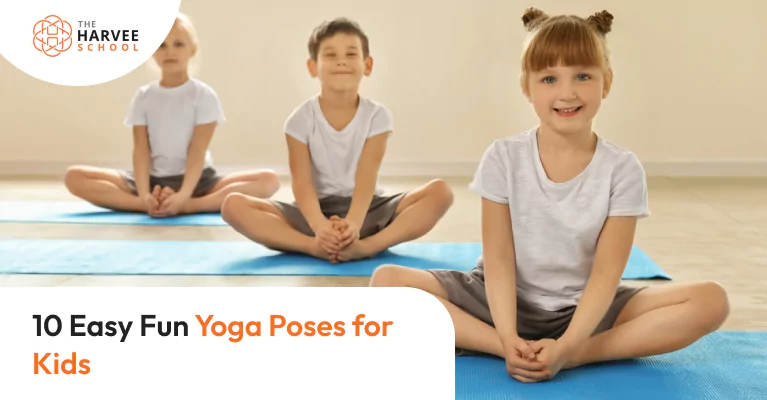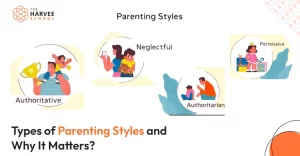10 Easy Fun Yoga Poses for Kids
Imagine us bending over to reach something and guess what? Painful muscle spasms! Let’s not pass this to our kids. Being flexible is the solution to lose all that stiffness in our body.
Yoga is a fantastic way for kids to exercise, unwind, and learn about mindfulness. Introducing yoga for kids can improve their approach towards physical fitness, promote emotional well-being, and enhance focus.
Plus, it’s a lot of fun! These 10 easy yoga poses for kids can be done at home or in the classroom. Make sure you stretch your body along with your kids.
1. Mountain Pose (Tadasana)
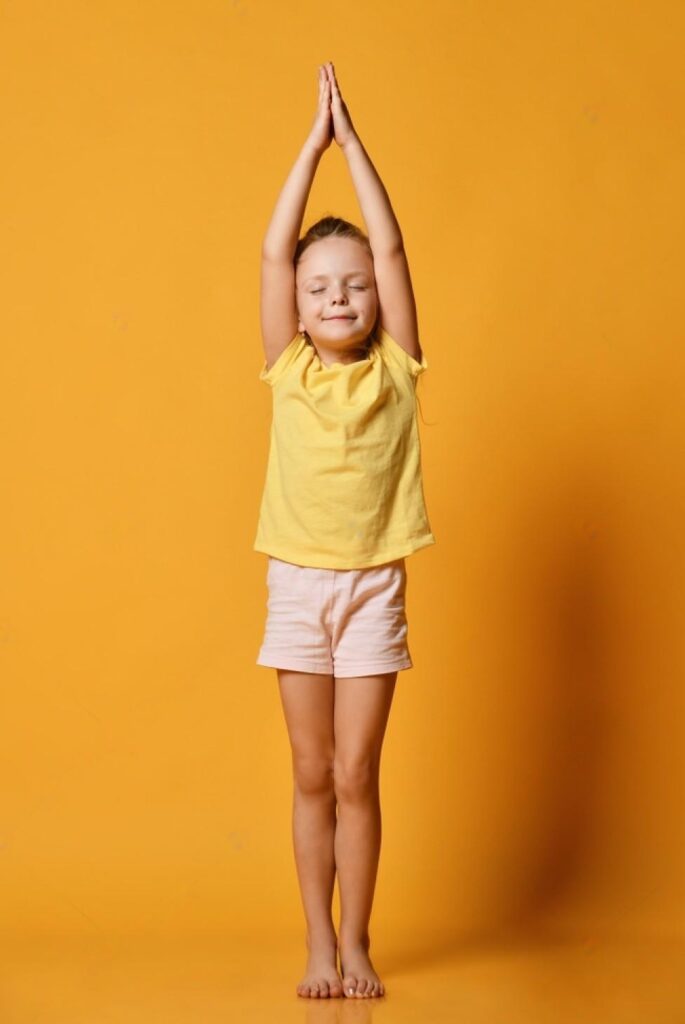
How to Do It:
- Stand upright with your feet close together and your arms relaxed by your sides.
- Ground your feet into the floor, feeling the earth beneath you.
- Reach your arms overhead, stretching your fingers toward the sky.
- Keep your shoulders relaxed and breathe deeply.
Benefits:
- Promotes good posture and balance.
- Increases body awareness and concentration.
- Helps develop confidence by feeling grounded.
2. Cat-Cow Stretch (Marjaryasana-Bitilasana)
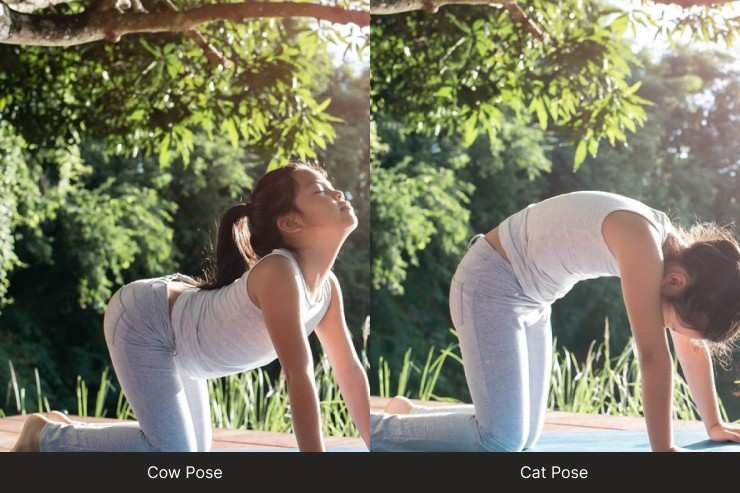
How to Do It:
- Begin on all fours with your hands directly under your shoulders and knees aligned with your hips.
- Inhale while arching your back (Cow Pose) and lift your head and tailbone.
- Exhale and raise your back (Cat Pose), tuck in your chin and tailbone.
- Repeat for 5 breaths, flowing between the two poses.
Benefits:
- Enhances spinal flexibility and mobility.
- Reduces tension in the back and neck.
- Teaches the importance of breath in movement.
3. Child’s Pose (Balasana)
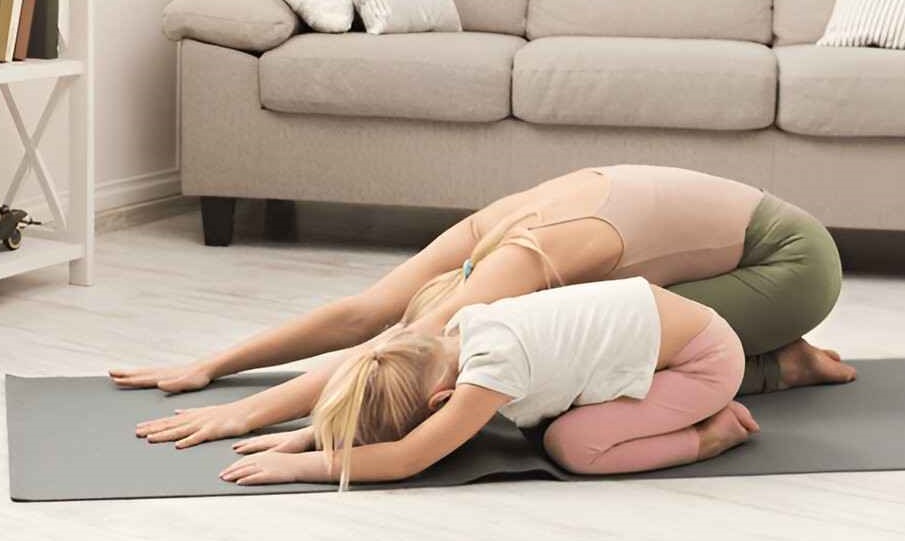
How to Do It:
- Kneel on the floor with your toes touching and your knees wide apart.
- Sit back on your heels, then fold forward, resting your forehead on the mat.
- Extend your arms in front or let them rest by your sides.
- Breathe deeply, relaxing your whole body.
Benefits:
- Provides a gentle stretch for the back and hips.
- Encourages relaxation and calmness.
- Great for winding down after active play.
4. Tree Pose (Vrksasana)
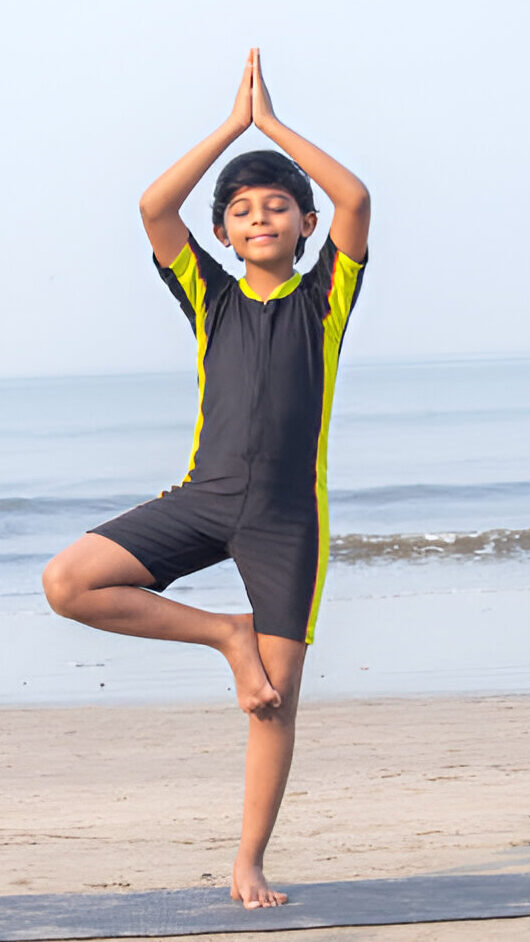
How to Do It:
- Stand tall with your feet together.
- Shift your weight onto one foot and place the opposite foot on your ankle or thigh (avoiding the knee).
- Bring your palms together at your heart or raise them overhead.
- Focus on a spot ahead to help maintain your balance.
Benefits:
- Improves balance and coordination.
- Builds strength in the legs and core.
- Fosters concentration and focus.
5. Cobra Pose (Bhujangasana)
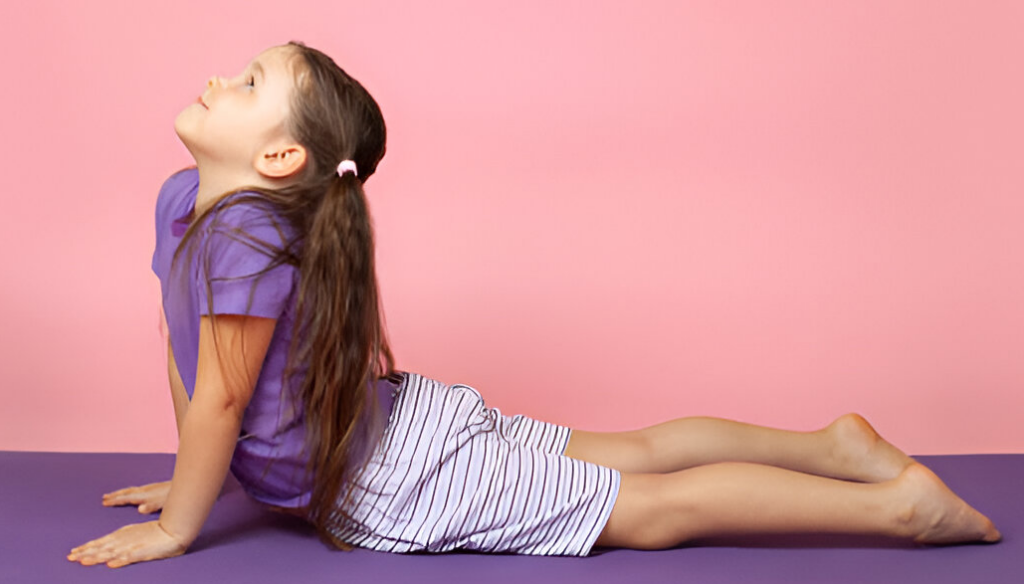
How to Do It:
- Lie face down with your legs stretched out straight behind you.
- Position your hands under your shoulders, with elbows close to your body.
- Inhale and slowly lift your head, chest, and shoulders off the floor, keeping your elbows slightly bent and your gaze forward.
Benefits:
- Strengthens the spine and opens the chest.
- Encourages deep breathing and relaxation.
- Boosts confidence by promoting a sense of openness.
6. Downward-Facing Dog (Adho Mukha Svanasana)
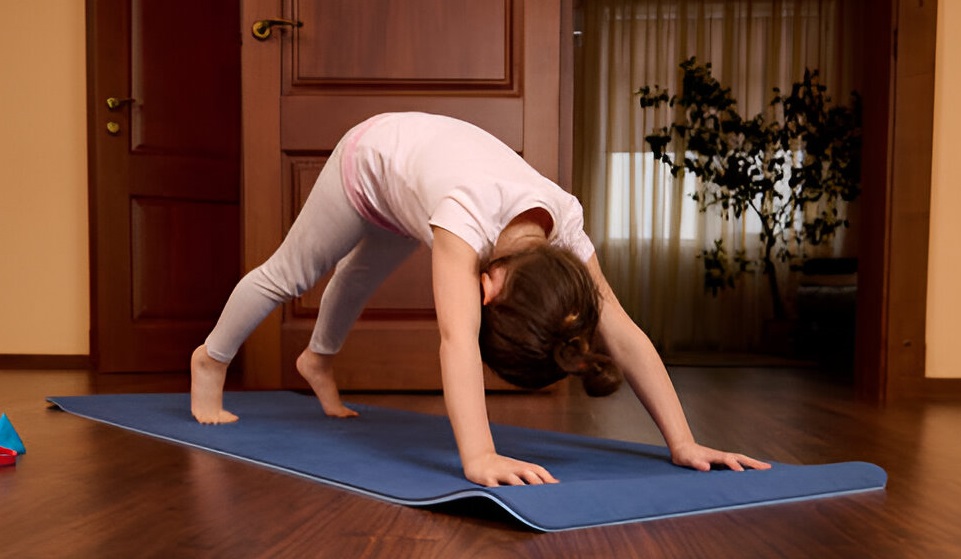
How to Do It:
- Begin on all fours, then lift your hips up and back, extending your legs straight.
- Press your heels toward the floor and your hands into the mat.
- Keep your head between your arms, and relax your neck.
- Hold the pose for 5 breaths.
Benefits:
- Stretches the entire body, especially the hamstrings and calves.
- Energizes and refreshes the mind.
- Builds strength in the arms and legs.
7. Butterfly Pose (Baddha Konasana)
How to Do It:
- Sit on the floor with your back straight and keep your legs extended.
- Bend your knees towards the inside and press the soles of your feet together.
- Hold your feet with your hands and gently flap your knees up and down like butterfly wings.
- Take several breaths and continue the stretch.
Benefits:
- Opens the hips and groin area.
- Enhances flexibility and relaxation.
- Can be a fun pose to incorporate imaginative play, like pretending to be butterflies!
8. Warrior II (Virabhadrasana II)
How to Do It:
- Stand with feet wide apart, turning your right foot out and left foot slightly in.
- Bend your right knee over your ankle, keeping your back leg straight.
- Stretch your arms parallel to the ground and look over your right hand.
- Hold for several breaths, then switch sides.
Benefits:
- Builds strength and stability in the legs.
- Encourages confidence and bravery.
- Teaches focus and determination.
9. Bridge Pose (Setu Bandhasana)
Help your child with this pose, as they may find it challenging.
How to Do It:
- Lie down on your back with your knees bent and keep your feet flat on the floor.
- Place your arms by your sides, palms facing down.
- Press through your feet to lift your hips toward the ceiling.
- Hold your breath for a minute, then slowly lower back down.
Benefits:
- Strengthens the back, glutes, and legs.
- Relieves tension in the spine.
10. Happy Baby Pose (Ananda Balasana)
How to Do It:
- Lie flat on your back and hug your knees toward your chest.
- Reach for the outer edges of your feet with your hands.
- Gently pull your feet down toward the ground, keeping your back flat.
- Rock side to side for a soothing stretch.
Benefits:
- Relaxes the back and hips.
- Promotes a sense of playfulness and joy.
- Encourages self-expression and creativity.
Tips for Practicing Yoga with Kids
Introducing yoga into your child’s routine can be as fun as it is beneficial. Some tips to practice it:
Make it Fun: Use playful language and encourage your child to pretend to be animals or objects while doing poses.
Create a Routine: Establish a regular yoga practice, whether it’s a few minutes each day or a longer session once a week. Consistency helps them develop a deeper connection to the practice.
Use Music: Play calming music or nature sounds in the background. This can help set a peaceful mood and make the experience more enjoyable.
Practice Mindfulness: Encourage your child to focus on their breath and how their body feels in each pose. This promotes mindfulness and self-awareness.
Invite Friends: Hosting a mini yoga party with friends can make the practice more social and enjoyable. Kids can learn from each other while having fun.
Benefits of Yoga for Kids
Yoga offers a myriad of benefits that can positively impact a child’s overall well-being. Some key advantages are:
- Physical Fitness: Regular yoga practice improves strength, flexibility, and balance, helping kids develop a healthy body.
- Emotional Regulation: Yoga teaches children how to manage their emotions, providing tools for coping with stress, anxiety, and frustration.
- Enhanced Focus and Concentration: The mindfulness aspect of yoga encourages kids to focus on the present moment, improving attention spans and concentration.
- Social Skills: Practicing yoga in groups helps kids learn teamwork, cooperation, and communication, promoting positive social interactions.
- Confidence Boost: As children master new poses, they gain a sense of achievement and boost their self-esteem.
Conclusion
Yoga is an incredible gift we can share with kids, providing them with tools for physical fitness, mental clarity, and emotional resilience. These 10 poses are not only easy to follow but also promote fun and creativity in practice.
Encourage your child to explore these poses, breathe deeply, and enjoy the journey of self-discovery through yoga.


